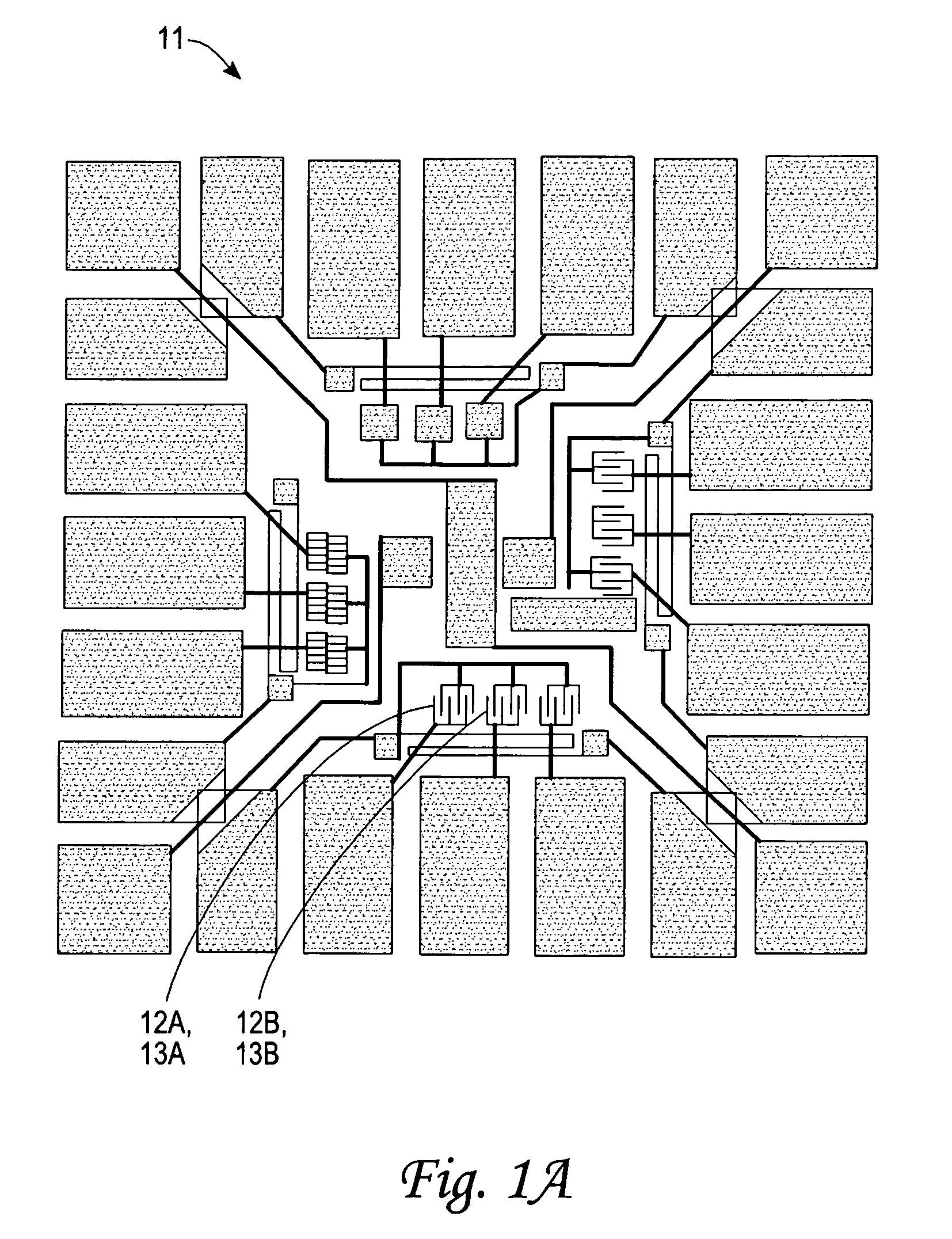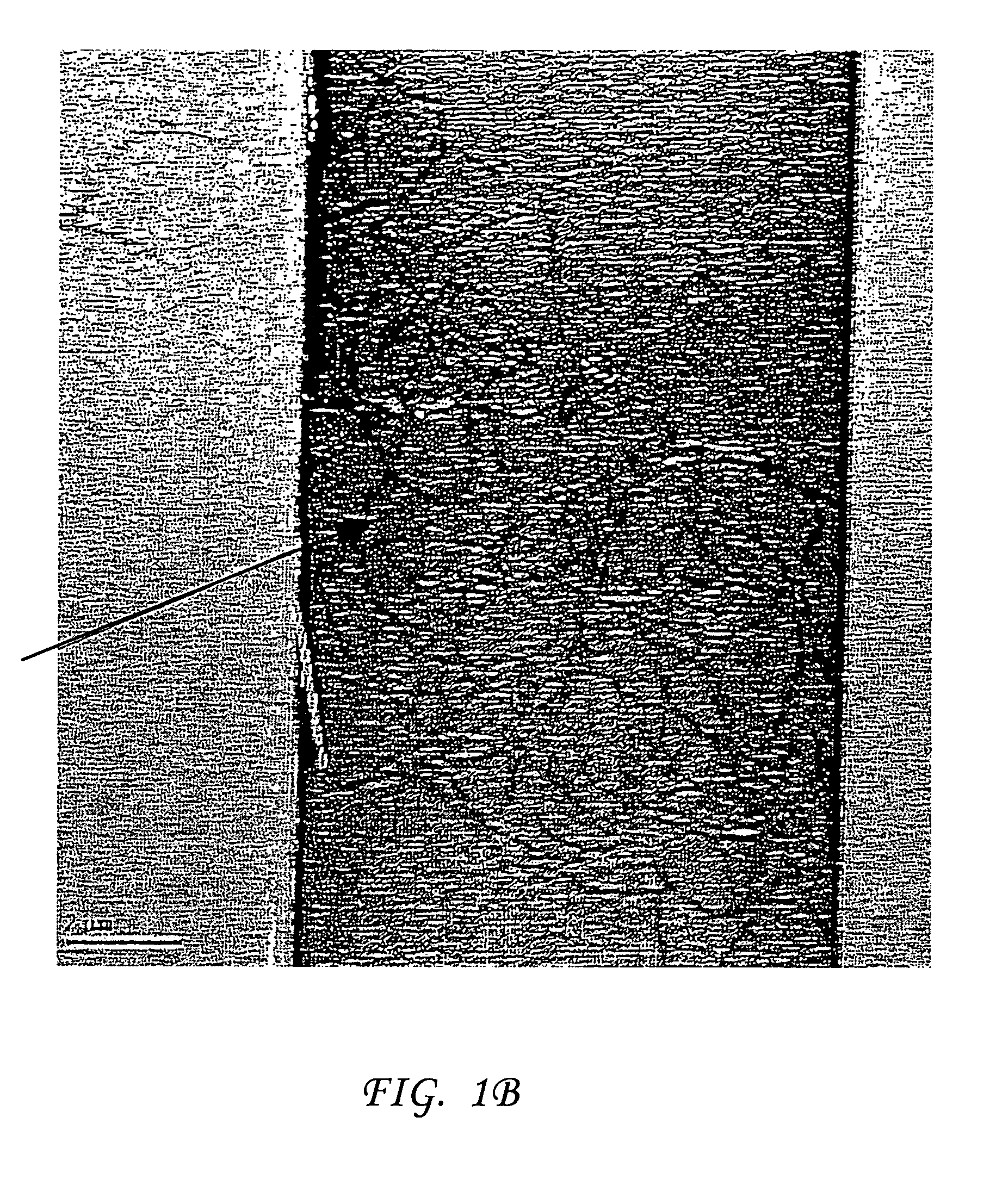Chemical sensors using coated or doped carbon nanotube networks
a carbon nanotube and network technology, applied in the field of chemical sensors, can solve the problems of difficult to make a single swcnt grow horizontally in order to bridge a given distance between the source and the drain, and the platform faces serious commercialization difficulties,
- Summary
- Abstract
- Description
- Claims
- Application Information
AI Technical Summary
Benefits of technology
Problems solved by technology
Method used
Image
Examples
Embodiment Construction
[0020]FIGS. 1A and 1B illustrate a sensor 11, constructed according to the invention, including interdigitated electrode fingers (“IDEFs”), 12A and 12B, with corresponding fingers, connected to respective first and second voltage sources, 13A and 13B, with a controllable voltage difference. In FIG. 1A, a 1 cm×1 cm chip with Q sensing elements and SWCNTs bridging the gaps between adjacent IDEFs (herem Q=2-12). Each IDE was fabricated using conventional photolithography with a nominal finger width of 10 μm and gap sizes of 4, 8, 12 and 50 μm, or any other desired set of gap sizes. The fingers and contact pads, 11A-i and 11B-j, were thermally evaporated Ti (20 nm thickness) and Pt (200 nm thickness) on a layer of SiO2, thermally grown on a silicon substrate. The sensing material was bulk-produced SWCNTs from a HiPCo process (Rice University.), purified to remove amorphous carbon and metal impurities according to a procedure described in the literature. The purified SWCNTs were disperse...
PUM
 Login to View More
Login to View More Abstract
Description
Claims
Application Information
 Login to View More
Login to View More - R&D
- Intellectual Property
- Life Sciences
- Materials
- Tech Scout
- Unparalleled Data Quality
- Higher Quality Content
- 60% Fewer Hallucinations
Browse by: Latest US Patents, China's latest patents, Technical Efficacy Thesaurus, Application Domain, Technology Topic, Popular Technical Reports.
© 2025 PatSnap. All rights reserved.Legal|Privacy policy|Modern Slavery Act Transparency Statement|Sitemap|About US| Contact US: help@patsnap.com



